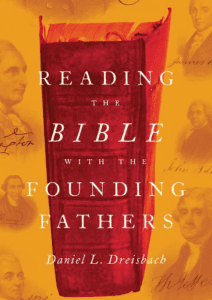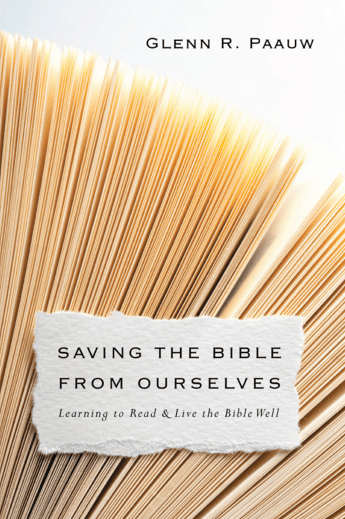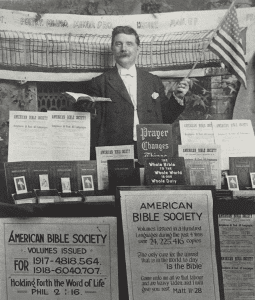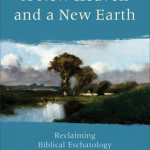 This it the final post on Peter C. Bouteneff’s book Beginnings: Ancient Christian Readings of the Biblical Creation Narratives. Through this book we have looked at the way the OT and second Temple Jewish sources viewed and used the creation narratives in Genesis 1-3, the way Paul and the other NT writers used the creation narratives, the second century apologists, the world of Origen, Athanasius, and the Cappadocians. Through this study we gain some important insights into the ways the people of God have approached scripture in general, and the creation narrative of beginnings more specifically.
This it the final post on Peter C. Bouteneff’s book Beginnings: Ancient Christian Readings of the Biblical Creation Narratives. Through this book we have looked at the way the OT and second Temple Jewish sources viewed and used the creation narratives in Genesis 1-3, the way Paul and the other NT writers used the creation narratives, the second century apologists, the world of Origen, Athanasius, and the Cappadocians. Through this study we gain some important insights into the ways the people of God have approached scripture in general, and the creation narrative of beginnings more specifically.
The early church fathers took the whole sweep of scripture seriously, and the sweep of scripture as centered in the story of Christ.
Scripture made sense as a whole only when it was understood along the lines of its principle of coherence, its rule of faith, its canon of truth – which the early writers consistently identified with the Father, the Son, and the Holy Spirit, with particular emphasis on the Son Jesus Christ. (p. 170)
It is clear that most of these people took Adam to be a unique historical individual, the first human, created in the image of God. The biblical story is the story of the generations of Adam. In fact, Adam’s function is primarily genealogical. This is an important, but not a perfect guide to how we should interpret the narratives. Unlike us the early church fathers had no reason to doubt a unique pair as the origin of the human species. The biology, cosmology, and philosophy of the day offered no counterpoint, except, perhaps, the view that the earth and the human race had always been. Some of them took clues from the text itself to see an interweaving of historical and figurative elements, but “science” was not a significant consideration.
To what extent does it matter that the early Christians took Adam as a unique individual?
What is the theological significance of their approach to the creation narrative?
Adam, Yes … but what about Sin? The real stumbling block for many today is not the genealogy – but the view of Adam as original sinner and the transmission of original sin. One of the major themes of Bouteneff’s study is the absence of a theology of transmitted sin in the early church. This point is worth a rather extended quote.
All this leads back to the issue of genealogy: Adam and Eve are the human forebears, but even more important, they are the progenitors of sin, and through sin, death. Yet none of the writers, scriptural of otherwise, whom we examined here understood human beings as born guilty of the sin of Adam. With Paul, they interpreted Genesis 3 as illustrating, among other things, the link between sin and death. Death was no a punishment for sin, however, but its natural consequence and (from Theophilus onward) even a mercy on the part of God to deliver humanity from an existence eternally bound to the spiraling cycle of sin. With Paul, too, they understood that everyone sins, but even if it is a semblance of Adam, it is not a sin “in Adam” or a perpetuation of Adamic guilt. The consistent emphasis in our authors was on human freedom: the sins people commit in semblance of Adam are sins committed of their own volition; one is culpable only for one’s own sins. Here again, however, all thinking about Adam’s sin and its legacy found its roots in, and developed from, the perspective of Christ. (p. 175)
The conclusion of Bouteneff’s study is that there is nothing in the theological and moral way that the early church fathers read Paul or used the creation narratives, that is undermined by our current scientific understanding of the age of the universe, the process of creation, or the origin of the human species through a unique couple. With the early fathers we all (all Christians that is) agree that God created the world, and that he did so with plan, purpose, and foreknowledge. We often, in my experience at least, fall short of a full appreciation of the Christ-centeredness of all of scripture including the creation narratives that shaped their readings of the text. Christ was not a response to Adam, but Adam was created in the image of Christ.
Bouteneff also makes the observation that in the early church emphasis on a strict literalism or historicity is always a response to a specific heretical challenge to the gospel of Jesus Christ. This is true in our age as well – the emphasis on strict historicity found in young earth creationism is a clear response to the very real challenges of modern rationalism and materialism. It does us no good to deny this challenge. We need, however, to step back and ask if this emphasis on strict historicity in the primeval history of Genesis is really the faithful way to counter this real challenge. Do we really need to insist on the historicity of Adam or of a talking snake to counter the argument that Christ was not raised from the dead?
That’s a wrap. Bouteneff wraps his book up commenting on the issues raised by modern science and by the faithful reading of scripture throughout the early centuries of the church.
The point is not, then, whether the fathers took the seven “days” or Adam to be historical. For the fathers, as for us, the historicity question has much more to do with how the narrative, and scriptural narrative specifically, works to convey its message – something that both the fathers and we understand in the variety of ways. … They read the narratives as Holy Scripture, and therefore as “true.” But they did not see them as lessons in history or science as such, even as they reveled in the overlaps they observed between the scriptural narrative and the observable world. …
That being the case, those of us who seek fidelity to the fathers should refrain from overly conflating Scripture with science, in order to bring realistic expectations to each. …
If we follow the fathers, we will see the Genesis creation accounts as God’s uniquely chosen vehicle to express his truth about cosmic and human origins and the dynamics of sin and death, all recapitulated and cohering in the person of Christ. However we might reckon the narratives’ relationship to the unfolding of events in historical time, our gaze will be fixed decidedly on the New Adam. (p. 183)
As protestants, and evangelicals, many of us are probably not overly concerned to seek fidelity to the fathers, a concern much more significant for Bouteneff and those in his circle of acquaintance. Nonetheless this study has much to teach us about the way Scripture has been interpreted from the very beginnings of the church. It is also of profound significance that this study spans the era of the beginning of the church and the establishment of both canon and creed. As the fathers we should never approach the scriptures as judges to separate truth from error. We approach scripture as students to learn. But this does not require submission to the strict literalism of 20th century fundamentalism and it never has – not in the early centuries of the church or throughout the entire history of the church.
This is a book well worth reading, one that should be on the desk of any pastor or Christian leader who finds it necessary to deal with the issues of Adam, creation, and fidelity to the Holy Scriptures. It provides an excellent starting point for discussion. It isn’t necessary to agree with all of Boutneff’s conclusions – or even with most of them (although I do). But it is necessary to be aware of this history in the church.
What is the most significant thing we can learn from the early church fathers?
In what way should the approach of the Jewish and Christian thinkers, including Paul, influence the way we approach scripture?
If you would like to contact me directly you may do so at rjs4mail[at]att.net.
If interested you can subscribe to a full text feed of my posts at Musings on Science and Theology.











